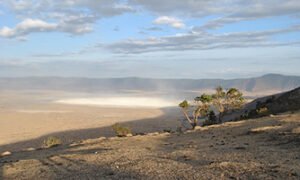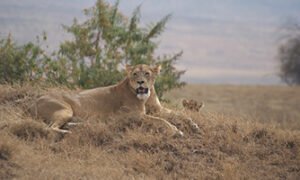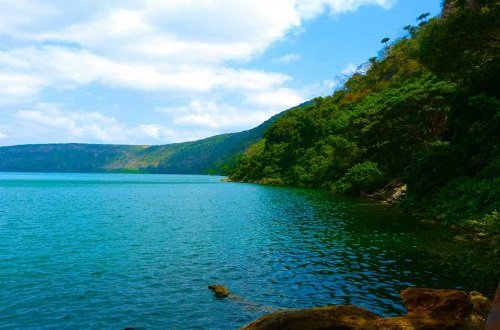Ngorongoro Crater – Tanzania’s Natural Wonder and Africa’s Garden of Eden
Deep in the heart of northern Tanzania lies one of the most spectacular natural formations on Earth — the Ngorongoro Crater. Often called “Africa’s Garden of Eden,” this breathtaking landscape is a paradise of wildlife, scenery, and ancient human history. Formed millions of years ago, the Ngorongoro Crater is the world’s largest intact volcanic caldera and one of the most famous safari destinations in Africa.
Designated as a UNESCO World Heritage Site in 1979, the Ngorongoro Conservation Area is part of the Serengeti ecosystem, offering travelers a rare blend of stunning geological features, rich biodiversity, and cultural experiences with the Maasai people. For anyone visiting Tanzania, this natural marvel is an absolute must-see.
The Formation and Geography of Ngorongoro Crater
The Ngorongoro Crater was formed around two to three million years ago when a massive volcano erupted and collapsed inward, creating a vast, bowl-shaped depression. Today, the crater stretches about 19 kilometers (12 miles) across and covers an area of roughly 260 square kilometers (100 square miles).
Its rim rises nearly 600 meters (2,000 feet) above the floor, creating a natural enclosure for wildlife. The crater’s ecosystem includes grasslands, acacia forests, swamps, and even a soda lake—Lake Magadi—which attracts thousands of flamingos and other bird species.
This unique topography gives visitors the feeling of stepping into another world—a self-contained wilderness teeming with life.
A Wildlife Paradise
Ngorongoro Crater is often described as the best place in Africa to see wildlife up close. Its enclosed geography makes it home to an incredible concentration of animals, offering one of the easiest and most rewarding safari experiences anywhere on the continent.
1. The Big Five
The crater is famous for hosting Africa’s Big Five: lions, elephants, buffaloes, leopards, and rhinos. It’s one of the few places in Tanzania where you can spot all five in a single day.
The black rhino, critically endangered and rarely seen elsewhere, roams freely in the crater, protected by rangers and conservation programs. Large herds of buffalo graze across the plains, while majestic elephants, many with long tusks, can often be spotted near the forested areas.
2. Lions and Predators
Ngorongoro boasts one of the densest lion populations in Africa. Visitors frequently witness dramatic predator-prey interactions as lions hunt wildebeest, zebra, and gazelles. Hyenas, cheetahs, and jackals also thrive here, adding excitement to every game drive.
3. Other Wildlife
The crater is home to over 25,000 large animals, including hippos, wildebeest, Thomson’s gazelles, warthogs, elands, and baboons. The mix of open grassland and woodland provides habitats for an astonishing variety of creatures.
4. Birdwatcher’s Paradise
For bird lovers, Ngorongoro is equally rewarding. Over 500 bird species have been recorded, including flamingos, ostriches, crowned cranes, and the rare kori bustard. The shallow waters of Lake Magadi attract large flocks of waterbirds, creating spectacular photo opportunities.
Ngorongoro Conservation Area – A Living Heritage
The Ngorongoro Conservation Area (NCA) covers over 8,000 square kilometers, encompassing not only the crater but also highlands, forests, and parts of the Serengeti ecosystem. What makes the NCA unique is that it’s a multiple land-use area, where wildlife coexists with local Maasai communities who continue to live and herd their cattle within the conservation boundaries.
The Maasai people have grazed their livestock in the area for centuries, maintaining a delicate balance between humans and nature. Visitors can experience Maasai culture firsthand through guided tours to traditional villages (bomas), where they can learn about their customs, dress, songs, and ancient way of life.

Olduvai Gorge – The Cradle of Humankind
Just a short drive from the Ngorongoro Crater lies Olduvai Gorge, one of the world’s most important archaeological sites. Often referred to as the “Cradle of Mankind,” this site is where Dr. Louis and Mary Leakey discovered fossils of early human ancestors dating back nearly two million years.
A visit to the Olduvai Gorge Museum offers fascinating insights into human evolution, displaying fossils, tools, and artifacts that tell the story of our ancient origins. It’s a profound reminder that Ngorongoro is not only a wildlife haven but also a cornerstone of human history.
Best Things to Do in Ngorongoro Crater
Whether you’re on a luxury safari or a budget adventure, Ngorongoro offers unforgettable experiences for every traveler.
1. Game Drives
The most popular activity is a game drive across the crater floor. Early morning drives offer the best chance to see predators in action and enjoy golden light for photography. Safari vehicles are allowed to descend into the crater via specific entry points like Seneto or Lemala Descent Roads.
2. Bird Watching
Bring your binoculars—Ngorongoro is a paradise for birdwatchers. Between November and April, migratory birds arrive, adding even more color to the already vibrant ecosystem.
3. Visit a Maasai Village
Cultural tours to Maasai villages on the crater’s rim offer an authentic look at traditional lifestyles. Visitors can witness dances, buy handmade beadwork, and learn about how the Maasai coexist with wildlife.
4. Olduvai Gorge Tour
History enthusiasts will love exploring Olduvai Gorge, a short detour that connects the natural wonder of Ngorongoro with the origins of humanity.
5. Hiking and Nature Walks
While the crater floor is reserved for vehicle safaris, guided walks are available along the rim or in nearby areas like Empakaai Crater and Olmoti Crater, offering stunning panoramic views and encounters with rare highland flora and fauna.

When to Visit Ngorongoro Crater
Ngorongoro is a year-round destination, but the best time to visit depends on what you want to experience:
- Dry Season (June to October): Ideal for wildlife viewing, as animals gather around water sources and the roads are easier to navigate.
- Wet Season (November to May): The landscape is lush and green, perfect for photography and birdwatching. Baby animals are often born during this period, adding charm to your safari.
No matter when you visit, the crater’s dramatic scenery remains breathtaking in every season.
Accommodation Options
Ngorongoro offers a range of accommodation options to suit every budget and travel style:
- Luxury Lodges: Such as Ngorongoro Crater Lodge and Neptune Ngorongoro Luxury Lodge, offering world-class comfort and spectacular views from the crater rim.
- Mid-Range Lodges: Like Rhino Lodge and Ngorongoro Wildlife Lodge, which combine comfort with affordability.
- Camping: For adventurous travelers, public and special campsites are available, offering a chance to sleep close to nature under the African sky.
Many lodges are built on the crater rim, providing guests with sunrise views that are simply unforgettable.
How to Get There
The Ngorongoro Crater is located about 180 kilometers (110 miles) west of Arusha, Tanzania’s safari hub.
- By Road: The drive from Arusha takes about 3–4 hours, passing through the scenic Great Rift Valley and Karatu town.
- By Air: Charter flights are available from Arusha, Serengeti, or other national parks to Manyara Airstrip, followed by a short drive to the crater.
Most visitors include Ngorongoro as part of Tanzania’s Northern Safari Circuit, which also features Serengeti National Park, Lake Manyara, and Tarangire National Park.
Why Ngorongoro Crater is the Best in Africa
What makes Ngorongoro so special is its unparalleled combination of natural beauty, wildlife diversity, and cultural depth. It’s one of the few places on Earth where you can witness lions hunting in the morning, meet the Maasai in the afternoon, and gaze at an ancient volcanic wonder by sunset.
Unlike other parks, the crater offers guaranteed sightings of a vast range of species within a compact area, making it ideal for both first-time safari-goers and seasoned travelers.
The Ngorongoro Crater is truly a masterpiece of nature—an awe-inspiring blend of geology, wildlife, and culture that represents the very essence of Africa. From its sweeping plains and shimmering lakes to its abundant wildlife and welcoming Maasai communities, every moment spent here feels like a journey back to the origins of life itself.
If you’re planning a safari in Tanzania, make sure Ngorongoro Crater tops your list. It’s not just one of the best destinations in Africa—it’s a once-in-a-lifetime experience that will leave you humbled, inspired, and forever changed.



